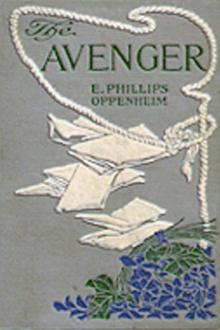Hitler's Terror Weapons, Brooks, Geoffrey [cat reading book .txt] 📗

Book online «Hitler's Terror Weapons, Brooks, Geoffrey [cat reading book .txt] 📗». Author Brooks, Geoffrey
Knowledge of the existence of this fuse in 1939, if only at the design stage, would explain Heisenberg’s persisting concern about the U235enrichment question, since once the fuse had been developed it cut the bomb material required to a few kilos of U235. If explosives technologists could improve on a fourfold compression factor the amount of material would be reduced by substantially more.
Professor Carl-Friedrich von Weizsäcker explained:
“Certainly we made no attempt to build a bomb. This decision was made easy because we recognized the impossibility of manufacturing a bomb in Germany under war conditions. If people now say that we set out to avoid or obstruct the building of a bomb that is a dramatization, since we knew that we were not in a position to do so.”41
That is what we are supposed to believe. The more important aspect of Heisenberg’s G-39 paper, however, concentrated on what was to occupy him for the rest of the war, the atomic pile that never was and the saga of the heavy water moderator.
Reactor Theory
It has to be stressed that uranium work did not lie at the centre of Heisenberg’s interests. When confronted with the assignment, he succeeded in familiarizing himself with the semi-technological field and during the war came to be regarded as the leading expert in the German Uranium Project. If, as he seems to have claimed, he was proposing, initially at least, to be a saboteur of Nazi nuclear science, Heisenberg was in a unique position to direct the uranium work along a false path, since, as the acknowledged senior theoretical physicist, he had been entrusted with the task of formulating the theory from the outset and, having set the guidelines, continued to influence the experimental side of matters until Germany’s final surrender. At the end of 1939, having been cut off from most foreign literature since the outbreak of war, he was entering new territory in attempting to establish a theory for the working uranium pile or Uranbrenner. His summaries in the two papers dated 6 December 1939 and 29 February 1940 respectively are still accepted today as completely correct, or at least in so far as what they actually say. But there is a material omission in these two reports. One cannot at this late stage discount the possibility of an error in his theoretical workings, but all along one has the impression that Heisenberg did not want a working nuclear reactor, and it does not seem unreasonable to suspect that he deliberately drew a false conclusion on which he was to rely later.
In the preamble to the report, Heisenberg cited as his principal source of reactor theory an article published in the 9 June 1939 edition of the scientific periodical Die Naturwissenschaften 42 under the title Can Technical Use Be Made of the Energy Content of Nuclei? written by the physicist Dr Siegfried Flügge of the KWI for Physics at Berlin-Dahlem. Under a sub-title The Control of Chain Reactions Flügge had stated:
“The decisive question for the technical application of the mechanism is manifestly this: is it possible to slow the chain cascade? Adler and Halban (Nature, Vol 143, 1939, p.739) have entered the debate and suggested the addition of cadmium salts to the mixture beforehand. In the absence of cadmium, the reaction would soar straightaway to a stationary temperature of 100,000 degrees C.”
In the mentioned article Adler and Halban had warned:
“The danger that a system containing uranium in high concentration might explode once the chain starts is considerable.”
The idea of the instantaneous explosive chain reaction in a reactor is grounded in an error of theory caused by failing to take into the mathematical reckoning the small fraction of relatively long-lived neutrons which are emitted up to a minute after fission. What should have been done in the mathematical theory was to average the slowing down and diffusion time of the lifetime of the prompt neutrons liberated within a micro-second of fission added to the mean lifetime of the 0.75% of neutrons which emerge up to 80 seconds after fission occurs. That calculation would have shown that while neutron density increases exponentially with time, the stable Period of the Reactor is not “less than 1 second” but is about 54 seconds.
The delayed neutrons play the decisive role in the safe control of modern atomic energy plants and without them nuclear power reactors would not be feasible. Heisenberg may have been genuinely under a misapprehension. On the other hand, he may have realized that this would be a useful error to have in hand if he wanted to obstruct the development of a nuclear reactor.
In later reports he was never challenged when he relied on the argument as a reason for proceeding at slow ahead with the interminable low-level experiments which filled the next five years. Knowingly or not, Professor Heisenberg accepted that the Period of the Reactor was less than one second in length, after which the reactor blew up. After the war, in his reproduction report respecting the Haigerloch B8 experiment published in FIAT Review of German Science 1939–1945 Heisenberg acknowledged that his theory had been at fault, admitting:
“American work shows that the Period of the Reactor is substantially extended by the delayed emergence of a number of those neutrons liberated during the fission process.”
And in a report about the German project prepared by A. Weinberg and L. Nordheim for A. H. Compton on 8 November 1945 the authors were of the opinion that the importance of delayed neutrons for the stability of a nuclear reactor had probably not been considered. Even if Heisenberg knew all along, however,





Comments (0)